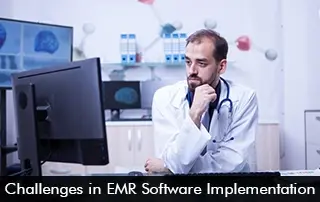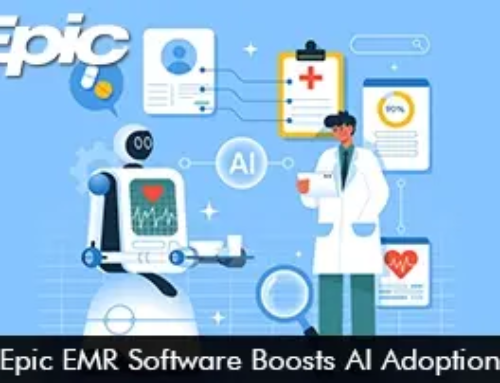EMR Software Systems have been implemented widely in the United States. They bring about many benefits of streamlined workflows, quick data retrieval, better patient engagement, and improved patient care. As software experts, we need to be on the lookout for any challenges associated with the robust technology. In this blog, we will discuss EHR software implementation hurdles in 2025 and what can be done for a smoother execution.
EMR Software Implementation Process
The implementation of Electronic Medical Records (EMR) Software is not just a simple process of installing the EHR System. There is so much more to it, including the following steps:
- Needs assessment by the healthcare organization
- EMR Software vendor selection with a good reputation, such as AdvancedMD EMR Software, and many more.
- EHR Software customization to match practice workflow requirements.
- Smooth data migration, ensuring no data is lost and is safely migrated.
- Effective staff training by the EMR Software vendor.
- Before going live, the electronic health records software is tested.
- Finally, the EMR System can be formally launched.
- Feedback collection after the software system is implemented.
Challenges in EMR Software Implementation in 2025
It is critical to know the roadblocks to EHR Software implementation, so these challenges can be addressed for a smooth implementation process.
In 2025, there are challenges associated with interoperability and data standards. These cannot be ignored, as there is pressure for standardization in the EMR Software industry. Different vendors make use of different data formats, which can cause discrepancies.
Data migration is also a key consideration and challenge for this year. It is a challenge to ensure data integrity and the complete and accurate migration of patient data from paper records to the Electronic Medical Records Software or to a new EHR System. Users of EMR Software might be fearful of the change in the EMR Software technology. New workflows and upgraded interfaces can intimidate staff members.
There has also been an increase in cybersecurity threats lately. EMR Software has private and confidential patient data, and threats from phishing and ransomware attacks are increasing. Security regulations are getting stricter, and software vendors need to implement robust security measures. Many EHR Software vendors are already in the right direction, such as athenahealth EMR Software and Epic Systems.
Overcoming EMR Software Implementation Challenges in 2025
Healthcare providers must carefully plan and take things one step at a time in order to overcome the challenges associated with the implementation of EHR Software in 2025. Selecting an EMR System that is user-friendly, integrates seamlessly with other programs, and provides robust data security is beneficial. Employee annoyance and errors can be decreased by providing early training and allowing them to settle in.
Maintaining open lines of communication with administrators, nurses, and physicians guarantees that everyone feels included in the change. The process runs more smoothly if you work closely with the vendor for support, frequent updates, and data backup.
Finally, the Electronic Health Records Software can adapt to the needs of the practice by evaluating user feedback after going live and making minor adjustments over time. This can be a real game-changer in healthcare, empowering providers to offer high-quality patient care and even improving their experience with the system.
If you want to read more about EMR Software implementation and guidance, click on our latest blog!








